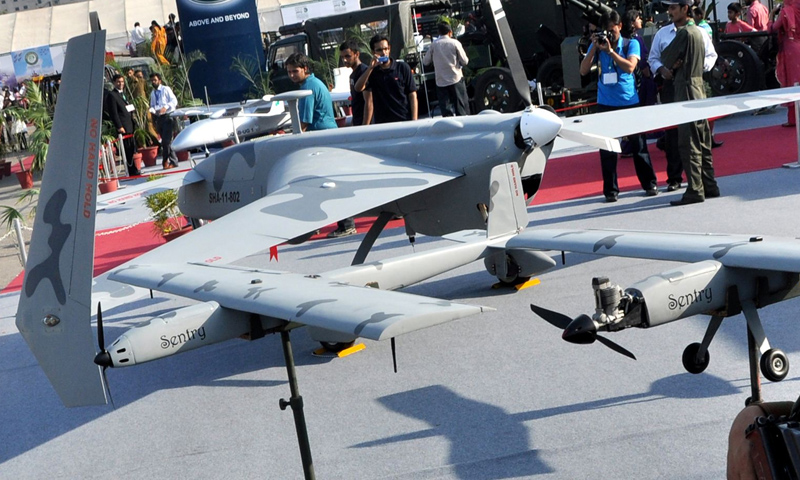RAWALPINDI: The Pakistani military on Monday announced its first fleet of indigenously developed surveillance-capable drones at a ceremony attended by the Army chief.
According to a press release, the introduction of the two unmanned aerial vehicles (UAVs), called the ‘Burraq’ and ‘Shahpar’ systems in the Pakistan Army and Air Force, are “a landmark and historic event, wherein a very effective force multiplier has been added to the inventory of the armed forces.”
Pakistan already has several types of unarmed surveillance drones in operation, but ‘Burraq’ and ‘Shahpar’ are the first to be developed locally.
The drones have been developed in cooperation with the National Engineering and Scientific Commission (NESCOM) is a civilian controlled Pakistani scientific research organisation.
“In the future, these UAVs could also be gainfully employed in various socio-economic development projects as well,” said the release from ISPR, the media wing of the military.
The unveiling ceremony was attended by Chief of Army Staff Gen Ashfaq Parvez Kayani, Chief of the Air Staff Tahir Rafique Butt, Director General Strategic Plans Division Lt-Gen (R) Khalid Ahmed Kidwai, and senior officers from the armed forces, scientists and engineers, said the ISPR statement.
The induction of the indigenously developed surveillance capable UAVs in Pakistan’s armed forces is a force multiplier, and will substantially enhance their target acquisition capabilities in real time, said the Army chief while appreciating the work of NESCOM scientists and engineers.
The ISPR statement did not state whether the surveillance drones were also capable of being armed with precision missiles, like the UAVs that the US uses to target suspected Taliban and al Qaeda militants in Pakistan’s tribal areas bordering Afghanistan.
According to earlier reports in the media, the Pakistani military has working to develop its own armed drones, but has been unsuccessful with a lack of precision munitions and advanced targeting technology.
According to one report, Pakistan carried out weapons tests earlier last year with the Falco, an Italian drone used by the air force for surveillance that has been modified to carry rockets.
According to the same report, the military was also conducting similar tests with the Shahpar.
An unarmed version of the Shahpar was unveiled for the first time at the International Defence Exhibition (IDEAS) in Karachi in November last year.
Industry insiders say that the Chinese government has also reportedly offered to sell Pakistan an armed drone it has produced, the CH-3, which can carry two laser-guided missiles or bombs.












































